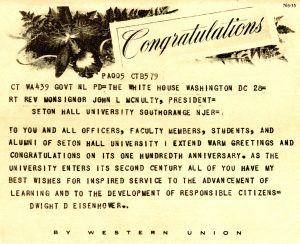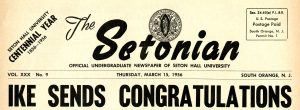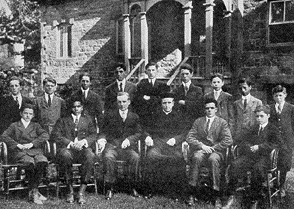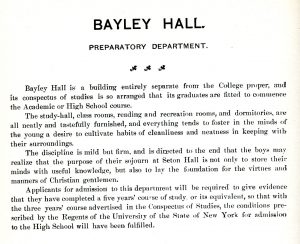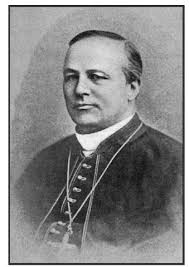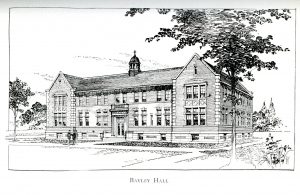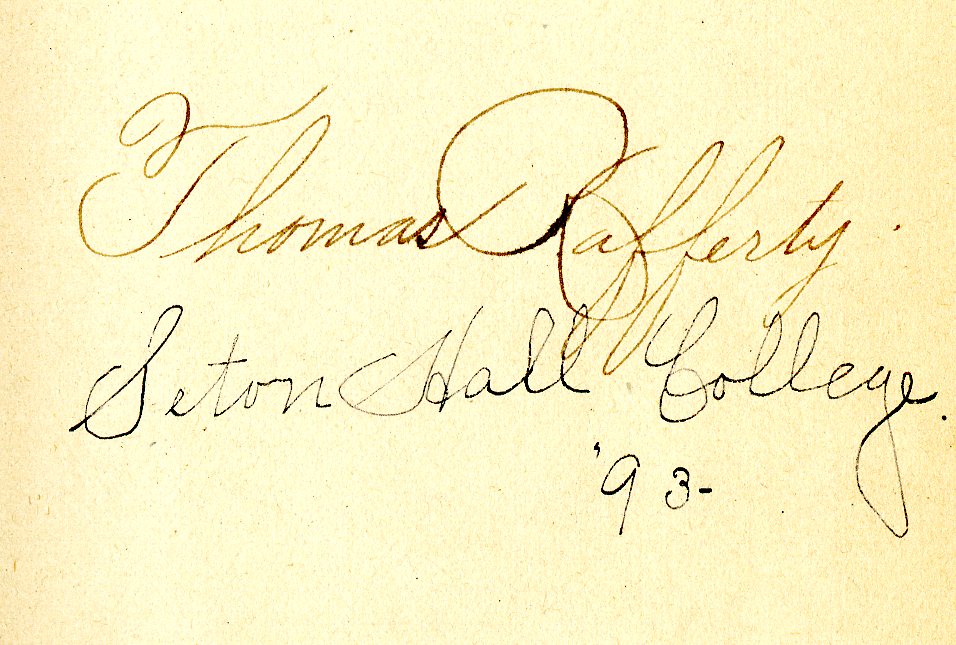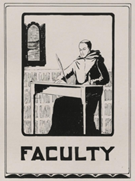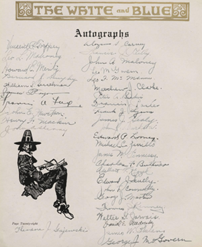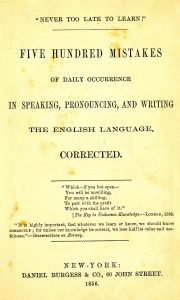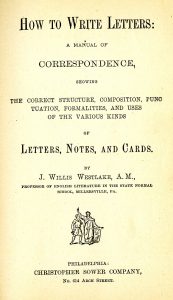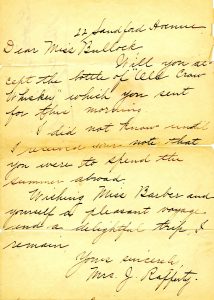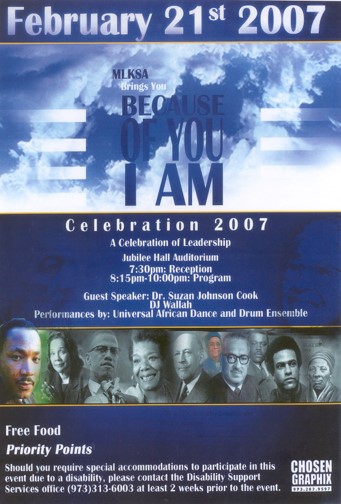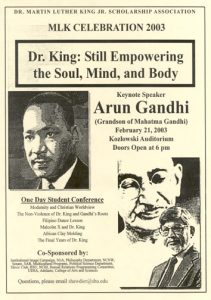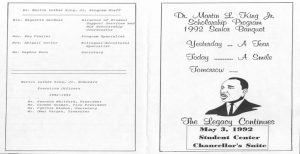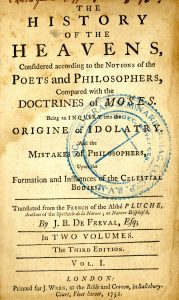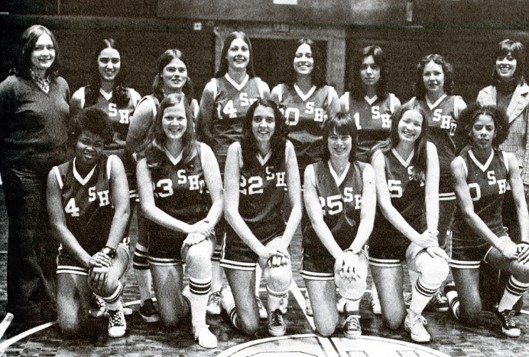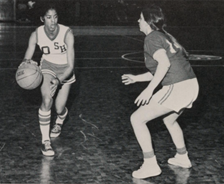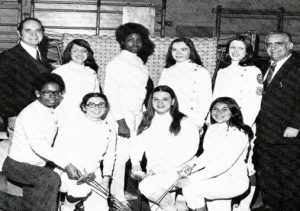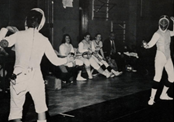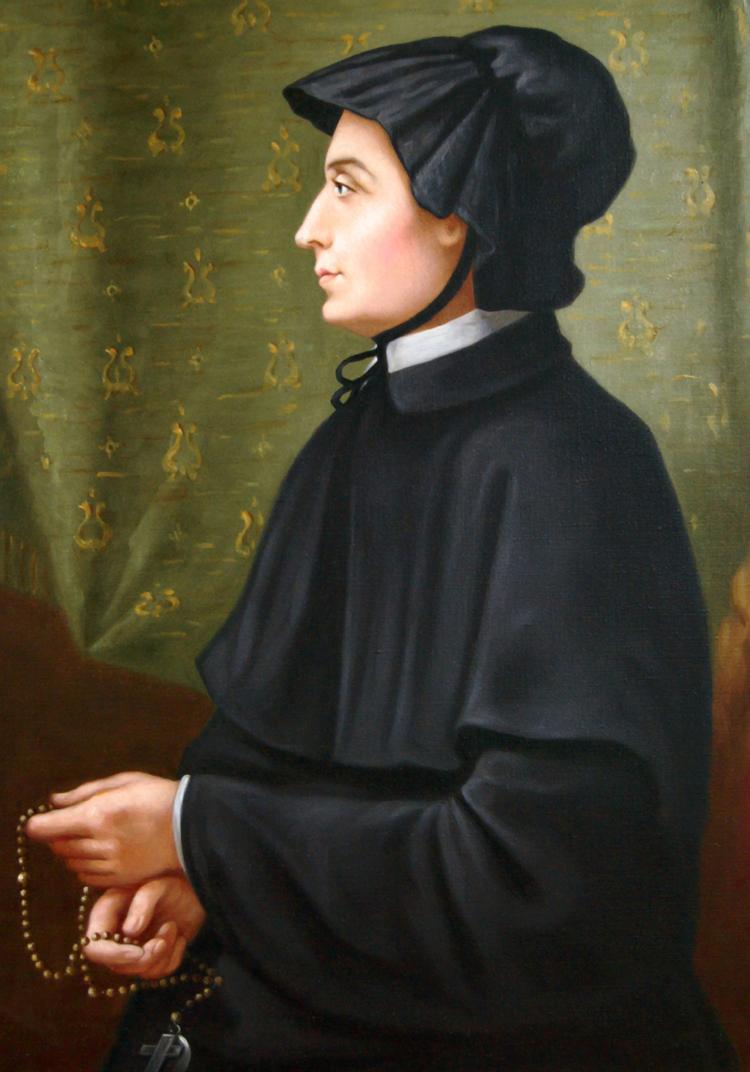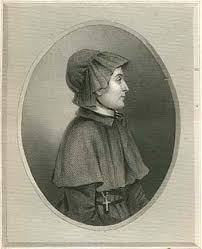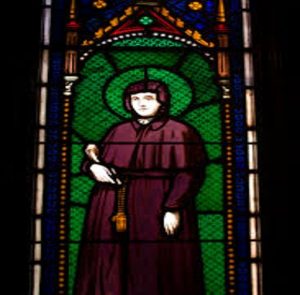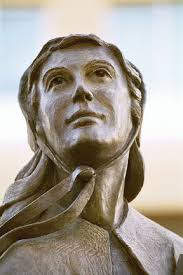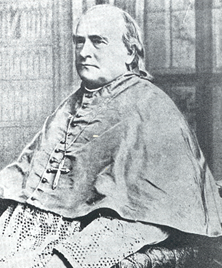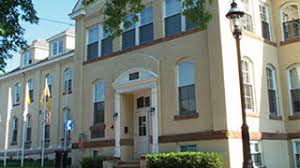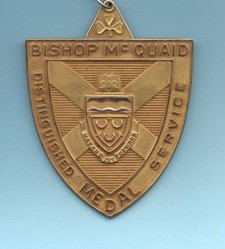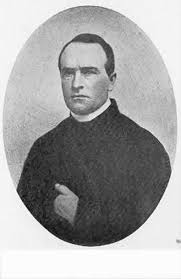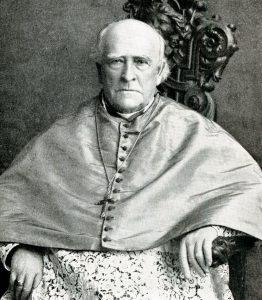Throughout the formative years of Seton Hall, the classroom experience found among the student body who experienced a highly traditional liberal arts curriculum with required classes connected to English Language instruction as an integral part of their curriculum. Individuals were expected to learn from a number of literary classics which helped to provide a solid foundation on proper grammar and traditional writing styles along with sharpening their own writing and rhetorical skills in the process. This was especially evident during the turn of the twentieth century.
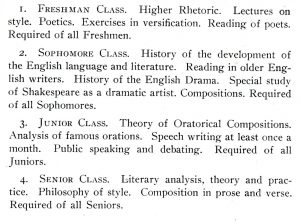
Fortunately, examples of self-expression and creativity among many several undergraduate scribes survive within our annals. The 1900-30s was a time when student publications were beginning to emerge, most notably The Setonian which served as not only a news outlet for the undergraduate crowd, but also served as the earliest “literary journal” on campus with dissemination of the first poetic work which was ironically entitled: “The Beginning of Life” featured in the October 16, 1925 edition of this periodical . . .
THE BEGINNING OF LIFE
To-day is my journey ended,
I have worked out the mandates of
fate,
Unarmed unaccompanied, undefended,
I knock at the Eternal Gate,
Bereft is life and its longing
It’s trial, its pain, and its sorrow,
Beyond is the Infinite Morning
Of a day without a to-morrow.
Return to dust and decay,
Body ! grown weary and old.
You are no longer my soul can you hold.
I desert you gladly forever
For a life that is better than this,
I go where partings ne’er sever
You in Olivion’s Abyss.
Lo ! the gate swings wide at my knock-
ing,
Across endless reaches I see
Lost friends, with langhter, come back flock-
To give a warm welcome to me,
Farewell the maze has been threaded!
This is the ending of strife,
Say not that death should be dreaded,
‘Tis but the Beginning of Life.
ARTHUR F. GRIFFITH
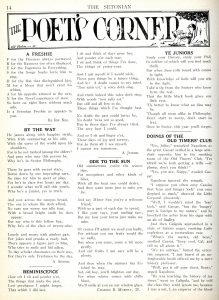
It was not long before a regular column was included in each monthly edition of The Setonian which featured a number of short pieces which ran the gamut in style from lyrical to elegy to light prose to rhyme, and other forms in-between. An example of the latter is evident within the following textual illustration from February of 1927 which touches on the popular subject of remembrance which is often what an author strives for when it comes to their respective audience . . .
MEMORIES
Do you ever sit and ponder
On days that are no more,
And again in fields o’er yonder,
You wander as of yore.
Do you try to catch the glances
Of friends you’ve lost awhile,
And with joy that near entrances
You recognize the smile
Of one you loved and cherished,
But who now has gone away,
Do you try to slowly linger,
Lest your memory start to stray?
If you have, you’ve tasted sweetly
Of the bounteous gift of God,
Who has left us blessed memories,
While the weary earth we trod,
Some glad day beyond life’s misery,
‘Twill be ours the joy to hold
The ones we seek in memory,
And to our hearts enfold
But now as on life’s pilgrimmage
We wend our weary way,
Thank God that those we’ve lost awhile
In our memories still may stay.
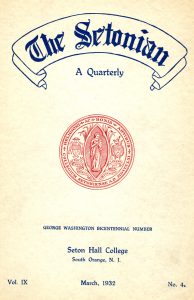
This period in history was also known for an overall artistic renaissance and this was evident with the creative works that were regularly featured not only the earliest campus publications (aside from The Setonian alone) included SPIRIT which was a bi-monthly journal of the Catholic Poetry Society of America. This periodical would ultimately had administrative and creative ties to Seton Hall for a number of years and this is recognized as we celebrate the 90th anniversary of the inaugural issue this year. (More about the history of SPIRIT can be found via the following link – http://blogs.shu.edu/archives/2016/01/the-spirit-an-85-year-celebration-of-catholic-poetry/)

Hundreds of different poems have survived over the years as student produced publication journals were established specifically to feature poetry, short stories, and related art works of various kinds that represent the respective eras in which they were created. This included such examples as Whither (1942), Wings (Paterson Campus – 1960s), Puddle Wonderful (1969), and post-1970 titles such as: Mutterins of the Muse, Phoenix, and Arcadia, among others. Over time the legacy of these examples of diverse verse does survive, and through the reader each line has another chance to resonate and shine.
For more information on the poetic and literary history of Seton Hall University and any related topics please feel free to contact us by e-mail: Archives@shu.edu or by phone at: (973) 275-2378.

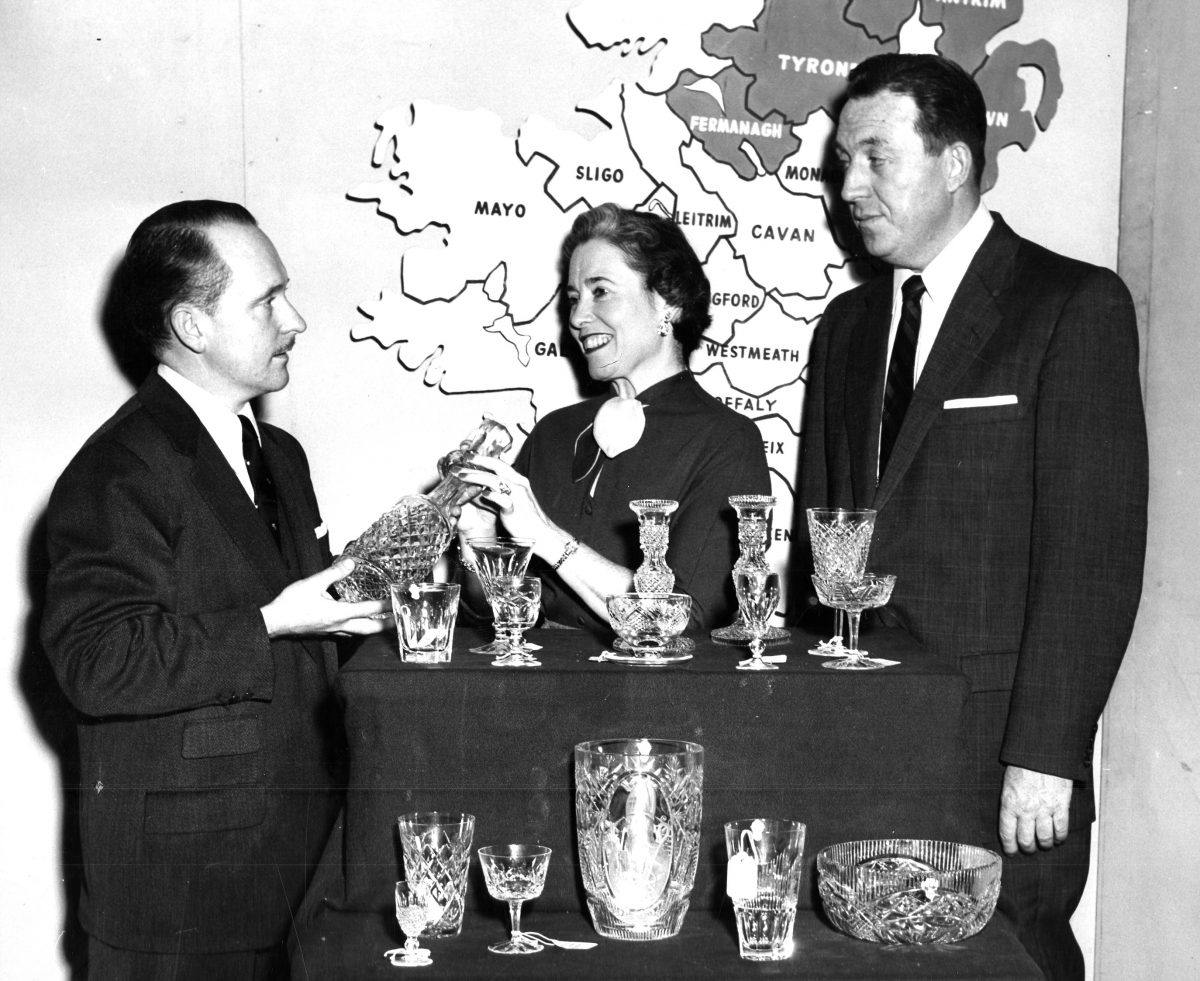
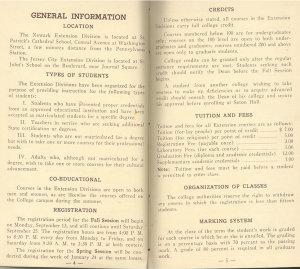
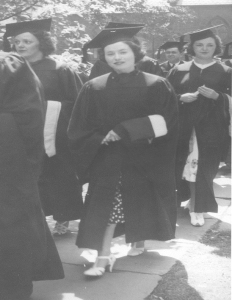
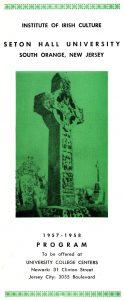
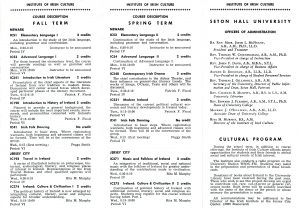
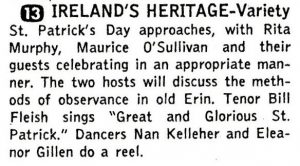
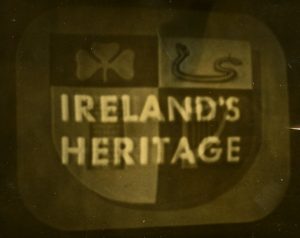
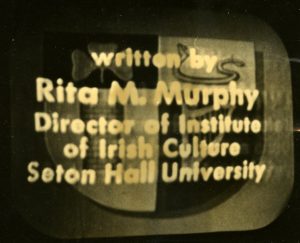
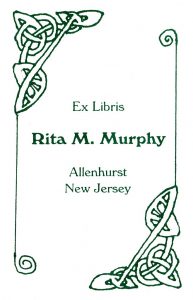

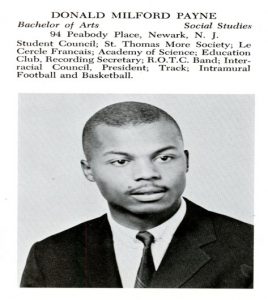
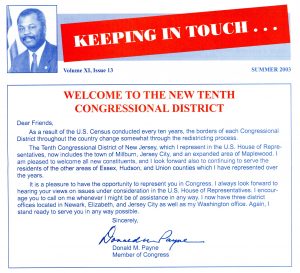
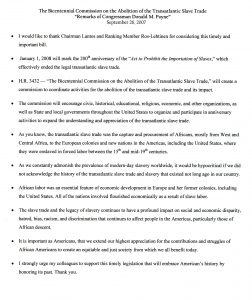
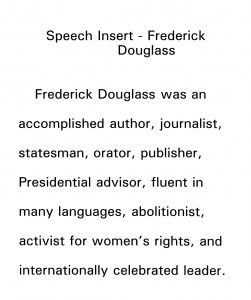
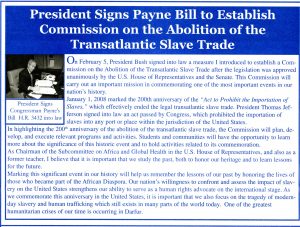
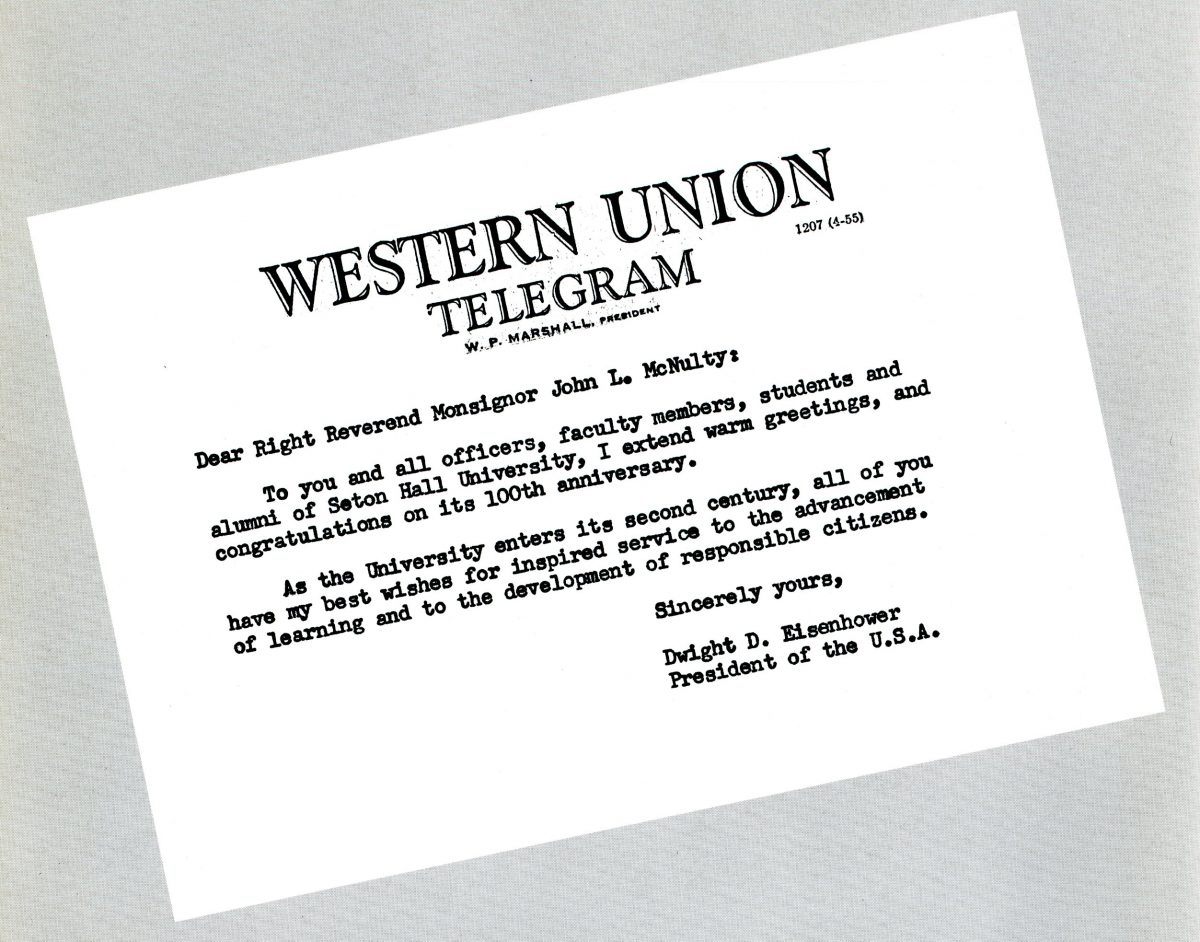
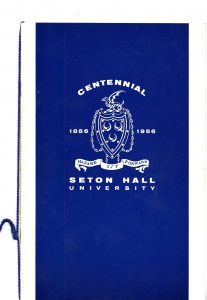
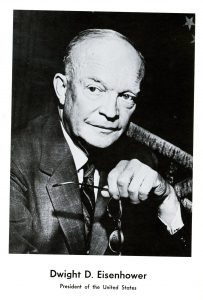 The invitation to “Ike” was a logical idea since it was a major anniversary celebration for the institution, but the Deputy White House Chief of Staff and Appointments Secretary to President Eisenhower was noted lawyer, Mr. Bernard Shanley, a native of Newark who served in this capacity from 1955-57 and had established ties to Seton Hall and the Archdiocese. Ike was also connected to the values of higher education as the former President of Columbia University (1948-53) along with his prestige as a war hero and leader of the country all made for the hope that he would be a part of this anniversary pageant. However, President Eisenhower would ultimately send his regrets via telegram that he could not attend ceremonies in South Orange that year.
The invitation to “Ike” was a logical idea since it was a major anniversary celebration for the institution, but the Deputy White House Chief of Staff and Appointments Secretary to President Eisenhower was noted lawyer, Mr. Bernard Shanley, a native of Newark who served in this capacity from 1955-57 and had established ties to Seton Hall and the Archdiocese. Ike was also connected to the values of higher education as the former President of Columbia University (1948-53) along with his prestige as a war hero and leader of the country all made for the hope that he would be a part of this anniversary pageant. However, President Eisenhower would ultimately send his regrets via telegram that he could not attend ceremonies in South Orange that year.